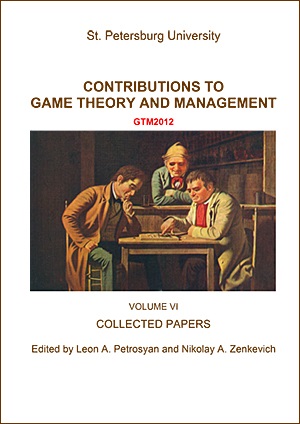Service Quality's Effects on the Selection of a Partner Airline in the Formation of Airline Alliances
Abstract
Airline alliance has become a prominent feature in the competitive airline industry. However, most research in this field focuses on the revenue management or pricing mechanism, rather than the initial intent of an airline alliance: providing a network of connectivity and convenience for international passengers and convenient marketing branding to facilitate travelers making inter-airline codeshare connections within countries. The main concern in this paper is how an airline's service quality might affect the selection of its partner airline during the formation of airline alliances. The main contribution is to show the strategic effects of the service quality on the proposed complementary airline alliances following a three-stage analysis framework, where the pre-alliance industry of the potential alliance members can either be monopoly or duopoly. We find that an airline will cooperate with the one which has the same service quality level if the pre-alliance service quality distribution of the airlines in the whole market differs greatly, while it tends to choose the one with similar (either higher or lower) service quality level as its partner if the distribution is approximately uniform.
Keywords:
airline alliances, service quality, three-stage analysis framework
Downloads
References
Aguirregabiria, V. and C. Y. Ho (2012). A Dynamic Oligopoly Game of the US Airline Industry: Estimation and Policy Experiments. Journal of Econometrics, 168 (1), 156–173.
Berry, S., M. Carnall and P. Spiller (2006). Airline hubs: costs, markups and the implications of customer heterogeneity. Advances in Airline Economics, Vol. 1: Competition Policy and Antitrust (Lee, D., eds), 183–214. Elsevier Press, Amsterdam.
Bitner, M. J. and A. R. Hubbert (1994). Service quality: New directions in theory and practice. In: Encounter satisfaction versus overall satisfaction versus quality (Rust, R. T. and R. Oliver, eds), pp., 77. Thousand Oaks, California: Sage Publications.
Chen, L. and T. Homem-de-Mello (2010). Re-solving stochastic programming models for airline revenue management. Annals of Operations Research, 177, 91–114.
Colonques, R. M. and R. F. Fillol (2005). Strategic Effects Of International Airline Alliances. Working Papers. Serie AD 2005–15, Instituto Valenciano de Investigaciones Económicas, S.A. (Ivie).
Hendricks, K., M. Piccione and G. Tan (1997). Entry and exit in hub-spoke networks. Rand Journal of Economics, 28, 291–303.
Park, J. (1997). The effect of airline alliances on markets and economic welfare. Transportation Research, Part E, 33, 181–195.
Vinod, B. (2005). Alliance revenue management. Journal of Revenue and Pricing Management, 4, 66–82.
Wright, C. P., H. Groenevelt and R. Shumsky (2010). Dynamic revenue management in airline alliances. Transportation Science, 44, 15–37.
Downloads
Published
How to Cite
Issue
Section
License
Articles of "Contributions to Game Theory and Management" are open access distributed under the terms of the License Agreement with Saint Petersburg State University, which permits to the authors unrestricted distribution and self-archiving free of charge.




